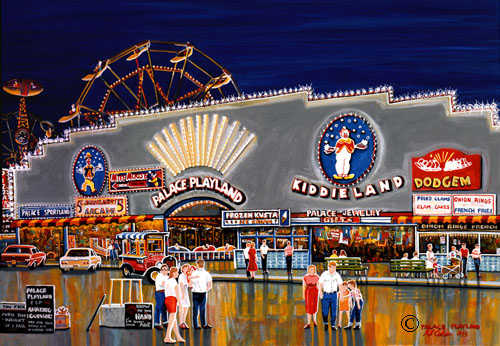Keywords: Pencil
Item 103636
Ambrotype of pencil drawing of man in profile view, ca. 1860
Contributed by: Maine Historical Society Date: circa 1860 Media: Ambrotype
Item 78688
Wooden Pencil Box, Dixfield, ca. 1950
Contributed by: Dixfield Historical Society Date: circa 1950 Location: Dixfield Media: Wood
Item 82425
Golding property, N. Side Oakland Avenue, Peaks Island, Portland, 1924
Owner in 1924: Sarah Golding Use: Summer Dwelling
Exhibit
Horace W. Shaylor: Portland Penman
Horace W. Shaylor, a native of Ohio, settled in Portland and turned his focus to handwriting, developing several unique books of handwriting instruction. He also was a talented artist.
Exhibit
John Y. Merrill: Leeds Farmer, Entrepreneur, & More
John Y. Merrill of Leeds (1823-1898) made terse entries in diaries he kept for 11 years. His few words still provide a glimpse into the life of a mid 18th century farmer, who also made shoes, quarried stone, moved barns, made healing salves -- and was active in civic affairs.
Site Page
""L. W. Titcomb, Farmington, Me." penciled on the last page. Book published by Wilson, Hinkle and Company, Cincinnati, 1870 View additional…"
Site Page
Historic Clothing Collection - 1940-1950 - Page 3 of 3
"Two suits in the MHS collection may be late 1940s possibly early 1950s interpretations of the new "pencil" skirt suit."
Story
Classroom Time Capsule
by Anna Bennett
On March 12, 2020, I left my classroom not knowing I wouldn't return again for months.
Story
The Cup Code (working at OOB in the 1960s)
by Randy Randall
Teenagers cooking fried food in OOB and the code used identify the product and quantity.
Lesson Plan
Longfellow Studies: "Evangeline: A Tale of Acadie"--Selected Lines and Illustrations
Grade Level: 6-8, 9-12
Content Area: Social Studies, Visual & Performing Arts
Henry Wadsworth Longfellow, Maine's native son, is the epitome of Victorian Romanticism. Aroostook County is well acquainted with Longfellow's epic poem, Evangeline, because it is the story of the plight of the Acadians, who were deported from Acadie between 1755 and 1760. The descendants of these hard-working people inhabit much of Maine, New Brunswick, and Nova Scotia.
The students enjoy hearing the story and seeing the ink drawings. The illustrations are my interpretations. The collection took approximately two months to complete. The illustrations are presented in a Victorian-style folio, reminiscent of the family gathered in the parlor for a Sunday afternoon reading of Evangeline, which was published in 1847.
Preparation Required/Preliminary Discussion:
Have students read "Evangeline A Tale of Acadie". Give a background of the Acadia Diaspora.
Suggested Follow-up Activities:
Students could illustrate their own poems, as well as other Longfellow poems, such as: "Paul Revere's Ride," "The Village Blacksmith," or "The Children's Hour."
"Tales of the Wayside Inn" is a colonial Canterbury Tales. The guest of the inn each tell stories. Student could write or illustrate their own characters or stories.
Appropriate calligraphy assignments could include short poems and captions for their illustrations. Inks, pastels, watercolors, and colored pencils would be other appropriate illustrative media that could be applicable to other illustrated poems and stories. Each illustration in this exhibit was made in India ink on file folder paper. The dimensions, including the burgundy-colors mat, are 9" x 12". A friend made the calligraphy.













